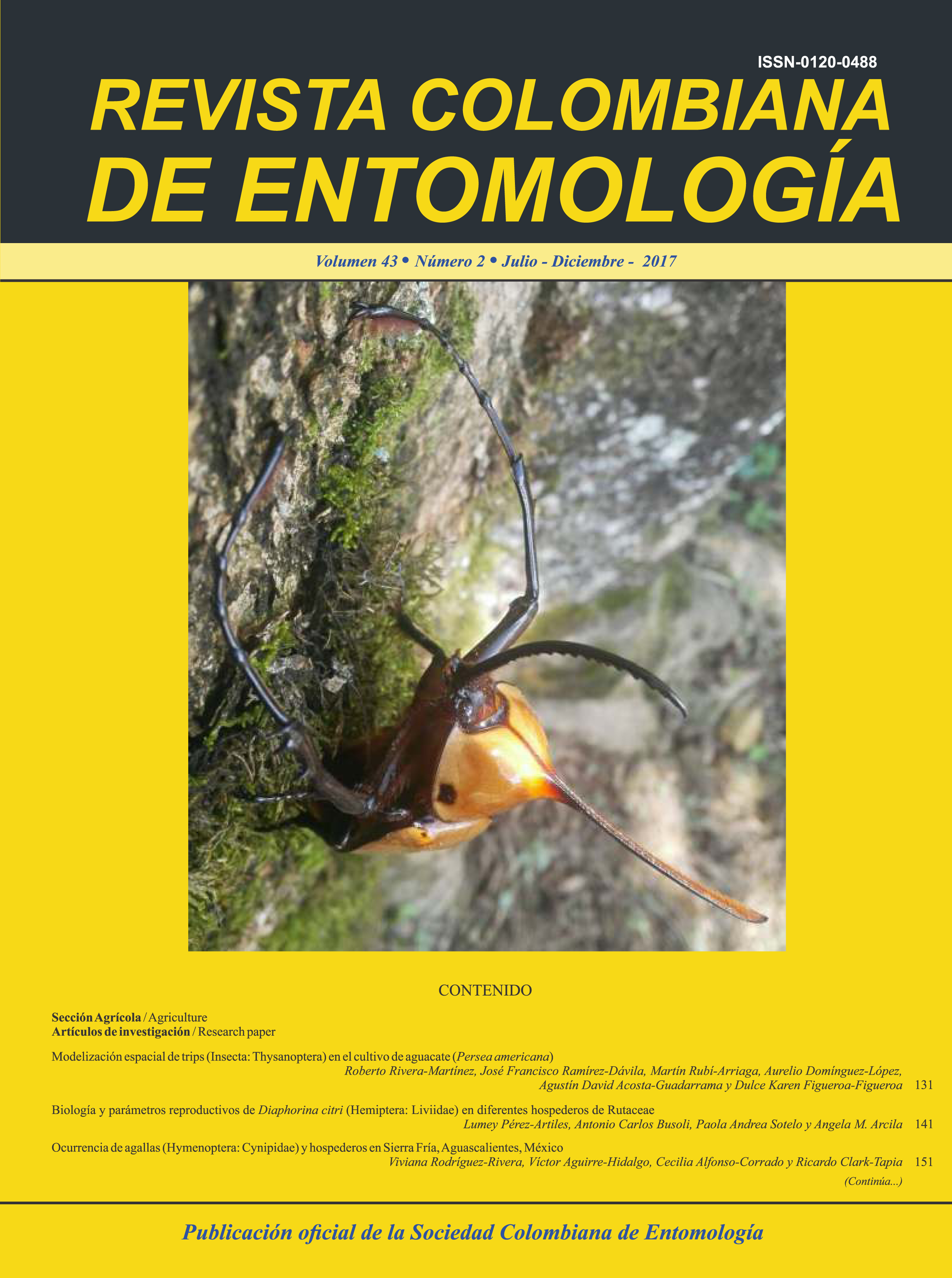Galls (Hymenoptera: Cynipidae) and host occurrence in Sierra Fría, Aguascalientes, Mexico
Keywords:
Conservation, disturbance, oak, ecological niche, habitatMain Article Content
Galls are formed in the tissues of plants by specific Cynipid gall wasps, and show a high specificity for
oaks in temperate climates and represented an indirect method to evaluate its abundance and distribution. This study evaluates the environmental factors that regulate the abundance and geographic distribution of galls in the Sierra Fría (SF), Aguascalientes, Mexico. In this forest ecosystem, we selected 10 sampling sites. On each site, the level of disturbance was registered, as well as geographical and climatological data. Ecological niche analysis was performed to relate gall niche occurrence/breadths with geographical and climatic gradients at two levels: a) regional distribution (hosts and study sites) and b) specific distribution (microhabitat oviposition). The SF had moderate levels of disturbance that affected the abundance of hosts, but did not significantly influence the abundance of galls. The oak had the highest richness of galls, with the pines having them to a lesser extent. Among the oaks, the Quercus section presented twice the amount of galls (9 ± 2.14) than the Lobatae section (4.7 ± 2.19). As for the specific distribution level, over 70 % of the galls were located on the underside of the leaves and the primary stem. This was associated with climatic factors, as a direct effect of climate and terrain impacted the variables of abundance and distribution of galls and hosts found. Finally, how the mutual interaction between host-parasite and dependence forces an availability of hosts that can generate a crisis of co-extinction, due to climate change and disturbance, is discussed.
Downloads

This work is licensed under a Creative Commons Attribution-NonCommercial-ShareAlike 4.0 International License.
Authors retain the copyright on their work and are responsible for the ideas expressed in them. Once a manuscript is approved for publication, authors are asked for a publication license for the term of legal protection, for all territories that allows the use, dissemination and disclosure of the same.

